It’s been a long time coming, but summer is here as is the conclusion to the Summer of War saga. Here’s my review of God of War (2018).
Like a band getting a new singer or revitalizing their sound after a down period, this game is self-titled, signifying a bit of a reboot of the series while serving as a continuation. This time Kratos is causing chaos in Norse mythology.
There are a lot of changes to the formula in this game. Are they all for the better? Will this be the game that ensures the God of War series continues on?
Also, if you’re new, check out my previous reviews of the series here:
- God of War I Review
- God of War II Review
- God of War III Review
- God of War: Chains of Olympus Review
- God of War: Ghost of Sparta Review
- God of War: Ascension Review
“Be better.” These two words uttered by Kratos during his latest adventure serve as the motivation for the Greek God as well as the game’s developer, Santa Monica Studios.
Following the somewhat lukewarm reception of 2013’s God of War: Ascension, the team faced the possibility of either completely revamping the franchise or moving on to a new IP.
After months of deliberation, the developers settled on moving Kratos to Norse mythology and giving him a son, Atreus. It was heavily inspired by director Cory Barlog having a son of his own and the personal journey he went through as a father.
The story starts with Kratos and Atreus mourning the loss of Faye, Kratos’ wife and Atreus’ mother. Atreus is a sickly young boy learning his place in the world and is thrust into adventure when the duo set out to fulfill Faye’s final wish: to spread her ashes from the highest peak in the realm.
What starts out as a straightforward journey leads to a realm-trotting adventure filled with amazing set pieces and spectacles.
Forget What You Know
I don’t plan on spoiling the story too much, as so many moments of it are better experienced blind. It is a great, heartfelt journey of a father doing everything he can to protect and teach his son how to survive in a cruel world while fighting literal dragons.
As usual, Kratos bumps into some of the divine beings of the land and enrages them, throwing more complexity into this tale.
Games in the series have always had tightly paced and well-written stories, but this is something totally different. Kratos speaks so much more here than in the original titles and is a relatable character that has actual depth instead of just being a manic killing machine that speaks in all caps. Seeing him take responsibility for and downplay his past actions to keep them away from Atreus is fun to watch.
The dynamic between the two is nothing new, but is a tried-and-true formula that works because of what we know about Kratos’s past, as well as the excellent writing and the performances from Christopher Judge and Sunny Suljic playing Kratos and Atreus respectively.
But the true star here that drives the adventure is the gameplay. It is completely different from previous God of War titles with a more open-ended layout and sections of the map that expand with new areas to explore once abilities are gained throughout the story.
Whenever a new ability was obtained, I got excited to go back to the map and explore areas that were previously blocked off and search for new secrets.
The game’s world is pretty large with a bit of an open-ended structure. You can explore a huge chunk of Midgard, Kratos and Atreus’ home, and later get the ability to travel to other realms. You travel through the area by boat and open up new areas as the game is completed.
I like this game’s approach to the map layout and progression more than say an Assassin’s Creed title. While the worlds in those games are vast and have much to see, they aren’t teeming with life and many of the tasks to complete just come off as busy work/padding.
God of War’s map is smaller, but a lot denser, which gives a richer and more fulfilling experience.
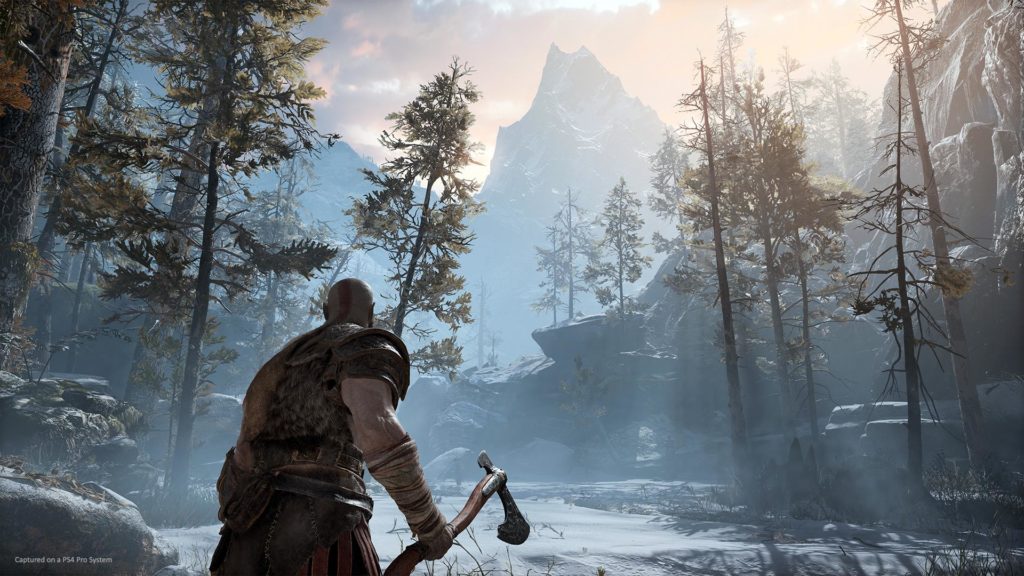
God of Lore
Compared to other titles in the series, God of War offers much more optional data logs and information about Norse mythology.
Throughout the journey, the player can find Jötnar Shrines, cabinets that open to show detailed illustrations of events in Norse legend. These are intriguing to read and flesh out the game’s world.
There are additional shrines to find throughout the realms that Atreus can translate and will use to fill out his mother’s notebook. This notebook can be accessed in the pause menu and is a good read for those who want it, similar to the codex in Doom Eternal.
Later on, a third character joins Kratos and Atreus in their adventure, offering up myths and tales expanding on the Norse Gods and how they shaped the land. It helps keep the momentum of the game going during fast travel scenes or moments when the duo are riding through Midgard on their boat.
Finally, the cavalcade of enemies encountered on the journey are pretty varied and notable ones include Draugr, Hel-Walkers, Travellers, Orges, Revenants, Dark Elves and Wulvers.
In addition, there are two recurring miniboss characters: Trolls and Soul Eaters. Trolls carry massive pillars as weapons and Soul Eaters shoot energy beams/projectiles out of their chests. These guys show up often and towards the end of the game. However, it’s underwhelming to see them at the end of a section instead of a new, unique boss.
The story and lore create a fully fleshed out and fantastic world for Kratos and Atreus to explore while hosting a nice assortment of baddies in each environment.
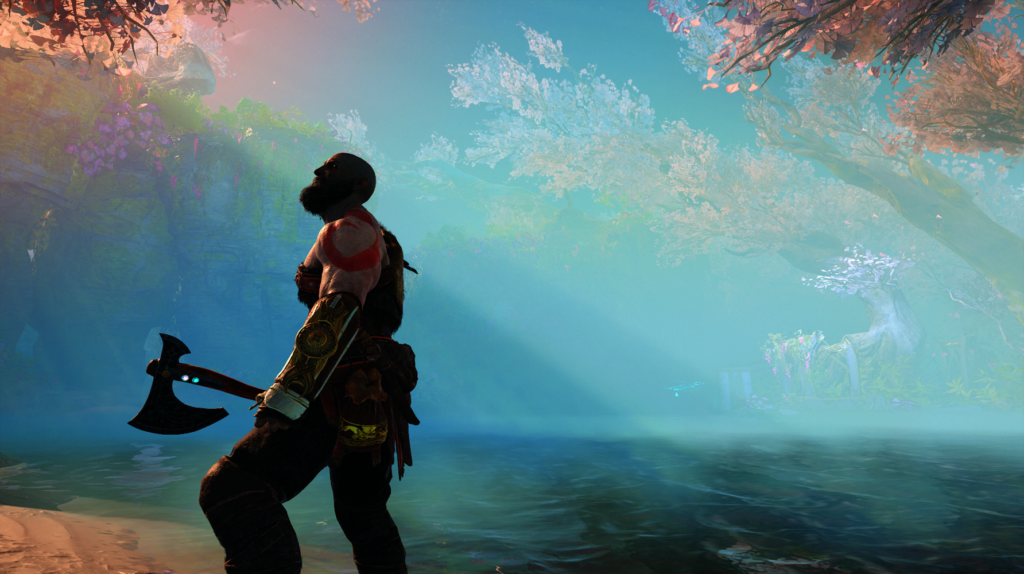
An Axe to Grind
The meat and potatoes of a God of War game is the combat, and this installment changes everything in that department. Instead of the Blades of Chaos, Kratos wields a weapon made for Faye, the Leviathan Axe.
With this weapon, the player can perform devastating swings or just chuck the axe at foes and later purchase upgrades that allow it to freeze enemies or slow them down. With the press of a button, the axe can be summoned back to Kratos, similar to Thor’s hammer Mjölnir.
Later on in the game, rune attacks can be assigned that work as powerful equalizers in combat. Examples of these are the axe being thrown and hitting enemies multiple times for a few seconds, or Kratos jumping into the air and freezing all foes present. They can be upgraded as well for more power and less cool-down time.
In addition, Kratos can melee attack with his fists if he doesn’t have the axe in hand and can block as well as parry enemy attacks with a shield attached to his arm. This has upgradable abilities as well.
This creates a healthy balance between standing in one place and chopping baddies to bits and effectively dodging and rolling to avoid attacks. This game definitely took inspiration from Dark Souls and it paid off here.
All in all, the axe is a joy to use and serves as a quality replacement to one of video games’ best weapons, the Blades of Chaos. It has less range and Kratos moves slower, but the power and versatility make up for it.
Spartan Rage makes its return in the game but is used differently. Gathering pickups and scoring successful hits on enemies fills the rage meter. Once full, activating it lets Kratos clean house on foes with his bare fists, and each subsequent hit gives him extra health. It’s a useful ability that can help the player get out of a pickle.
The combat is always exciting and provides a consistent challenge. Much like Doom, death can be common but never feels cheap. More so than before, Kratos has many options at his disposal to protect his son and fulfill his mission. God of War has matured its combat from the hack and slash roots to match up with its storytelling.
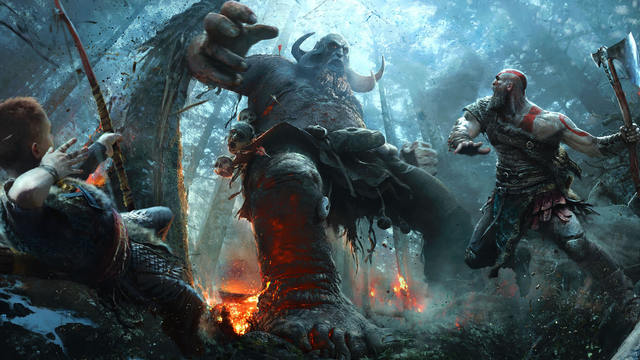
Variations in the Formula
In between combat encounters, there is much to do and discover. There are a plethora of puzzles to solve, many of which unlock chests that contain items that increase your max health and other attributes.
There is an abundance of hidden chests, artifacts and treasures throughout the realm that can be solved by light puzzle-solving or by taking a different, less obvious route. It is satisfying to find these and will yield hacksilver (replacing the red orbs of previous games) and other components needed for crafting.
Most puzzles are pretty simple and involve using the Leviathan Axe to hit a switch or ring a bell to open doors or move platforms. It’s a nice change of pace to break up the combat that doesn’t overstay its welcome.
However, one puzzle does get on my nerves. It involves picking up a large crystal and moving it from one spot to another for Atreus to shoot with an arrow. It pops up every now and then and kinda drags on for too long and halts the game’s momentum. It would be fine if it showed up just once, but it happens quite a few times. It reminds me of the ladder sections from The Last of Us.
Loose RPG (Role Playing Game) elements are also incorporated, as Kratos has stats such as defense, strength, runic, cooldown and vitality that can be increased by crafting, purchasing and upgrading wrist, chest and waist armor.
There are runes scattered throughout the world and sold by merchants that upgrade both weapons and armor, though some of the descriptions are vague. There are other specific runes that activate a special ability, such as a shield that blocks attacks and replenishes health, or the ability to stop time for a moment.
Most of the armor looks cool but it wasn’t always apparent how much they helped in combat. Additionally, it was hard to figure out what components I needed or where to find them to craft certain gear. Generally, a lot of them are hidden throughout the various side activities in the game which may aggravate players.
A huge chunk of Kratos’ moves and abilities are locked in a skill tree that you use experience to purchase. There’s nothing wrong with this system, as I was constantly buying new moves, but I really didn’t use anything different than the first few upgrades. Either I’m stubborn in how I play or there really weren’t any different moves that wowed me.
In general, the RPG elements work and are an effective way to change things up, but they definitely need some more fine-tuning and fleshing out in future games.
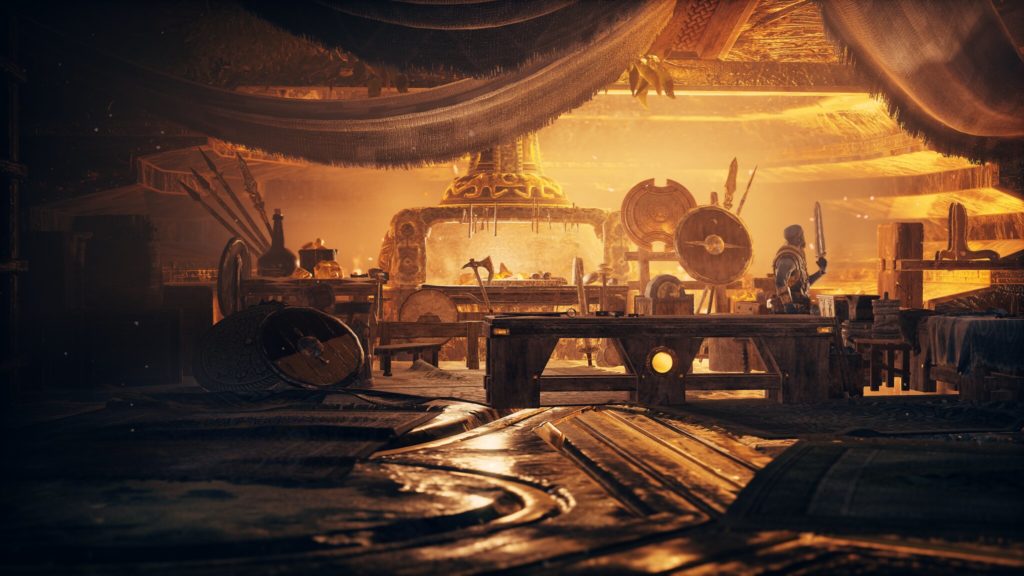
Side Action
In addition to the main story, this game has a wealth of optional side content. Throughout Midgard lie wayward souls that ask the duo for help completing their last deeds to help them enter Valhalla, missions to help Sindri and Brok, two dwarven blacksmiths who upgrade the player’s weapons and dragons locked up by Odin, longing for freedom.
These are fun quests that also work to help flesh out the relationship between Kratos and Atreus, as the latter is eager to help these souls while the former doubts their intentions. Usually, they both learn something in the end.
As I mentioned, hidden behind these side activities are crafting components, so getting that axe upgrade or getting that slick set of armor will require you to do some of these quests.
After completing the game, two new realms, Niflheim and Muspelheim are unlocked. Each serves a different challenge, as Muspelheim features small combat arenas where the goal is to beat enemies without taking a hit or kill a wave of enemies within a time limit.
Niflheim is one of the coolest parts of the game as there are multiple branching paths full of giant blades, blocks that will crush the player and poisonous gas throughout. The goal is to make it as far as possible and escape the labyrinth with as much treasure as possible. It’s an exhilarating challenge that runs on high risk, high reward.
Another post-game challenge comes from fights between the mystical Valkyries, corrupted defenders of Valhalla. They can be found near the end of the story, but they are incredibly difficult encounters that require the best gear and combat upgrades, as well as a bevy of patience and determination.
This was the last thing I completed in the game and it was still a feat as it took me several hours to defeat all nine Valkyries. You definitely need to beat Niflheim and Muspelheim to have a chance in these battles. These were a lot of fun and a satisfying way to show how far I’ve come in mastering this game’s combat.
However, one big issue I have is the fast-travel system. Most games in this style have a simple method of fast travel: go to the map and click on where you want to go, boom. Well, it doesn’t work like that here.
There are several steps to get somewhere. First, you have to find one of the many mystic gateways in the world and then select another gateway to where you want to go. Then, you have to wait a minute or less for a portal to open up inside to walk through that will take you to the desired spot. And you have to go to a specific location just to switch realms, which plays a long animation first.
It’s annoying and just adds extra steps to what should be a simple process. I believe the team at Santa Monica wanted to make the game have zero loading screens, so this was their workaround, though I would’ve just preferred a loading screen. That’s more intuitive at least.
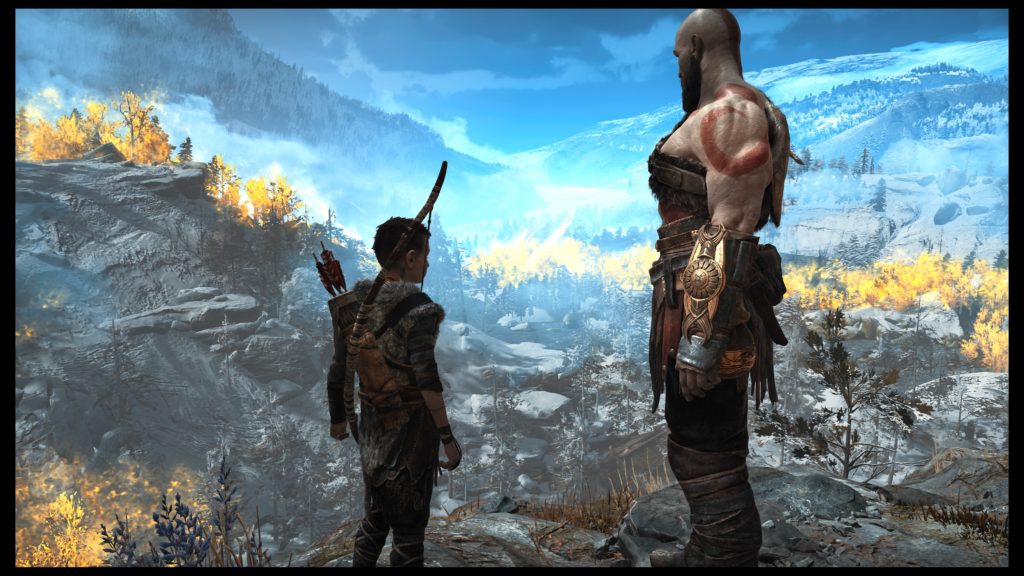
Beauty Beyond Realms
From the moment Kratos’s journey starts, it is clear how much craft and dedication was put into the level design and overall presentation of God of War. This might be the most beautiful game on the PS4, full of lush, detailed landscapes and fantastic character models and animations.
There is a real diversity to the environments explored here, from elven kingdoms to a snowy mountain housing a literal Giant to Dwarven ruins that host an entire mining operation and the bones resulting from years of war, everything serves a purpose and is worth looking at.
The series also continues the tradition of a grand scale, as Kratos traverses and fights structures and foes much larger than him. This helps illustrate just how small he is compared to the challenges he faces to honor his wife.
This is helped in part by the game having an over-the-shoulder view and a fully player-controlled camera, a first for the franchise. It works well and gets rid of the occasional cheap hit enemies would get due to the fixed camera of past titles.
Another fantastic element of the package is the soundtrack. Composed by Bear McCreary, every track is orchestral and fits the moment. From the chilling choral main theme to some quieter moments when entering an unknown land, the music gives every moment the appropriate atmosphere. The developers also knew the art of pulling the score back when an important character moment happens.
I played this on a regular PS4 and I’ve heard that it can be a little buggy if not played on a PS4 Pro, but I had zero technical or performance issues during my playthrough. Like most of Sony’s flagship releases, this game is polished to the core and is a feast for the senses.
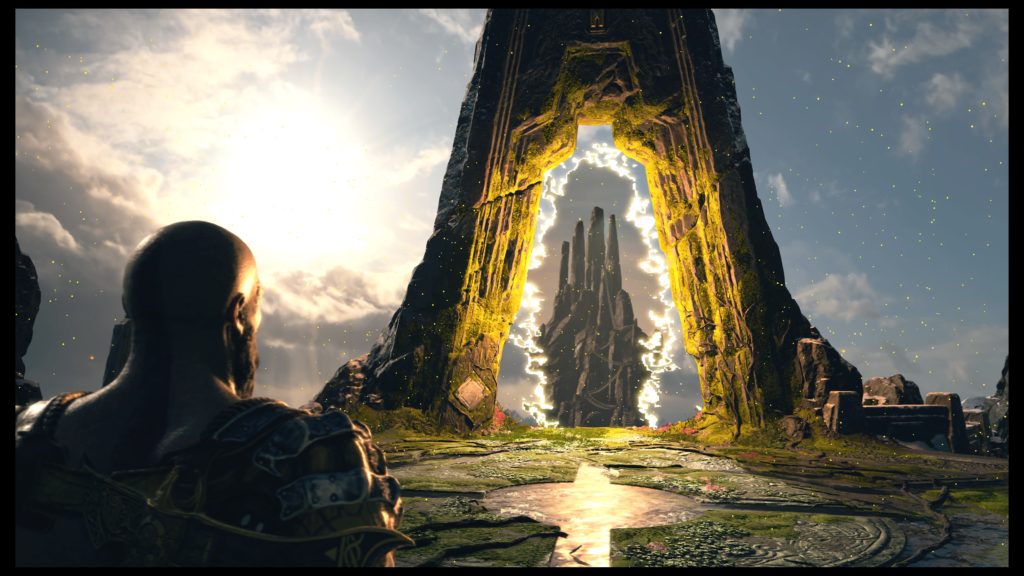
The Verdict
At long last, God of War has grown up and become much more than just one man’s quest for vengeance. While the earlier games are great exhilarating fun, this title revitalizes the franchise, giving Kratos so much more character and crafting an endearing and heartfelt story that reminds me of how great video games can be.
The fully fleshed out open-ended map and wealth of collectibles give this game massive replayability value. The combat is completely new but just as satisfying as the classic titles while retaining the breathtaking visuals and huge scope of the Greece-set games, in addition to a stunning graphical presentation and soundtrack.
While there are some minor issues I have with the RPG elements that need fleshed out, an inconvenient fast-travel system and a lack of variety in the bosses, they pale in comparison to the total package.
This is a game that is polished and is truly sublime to play. It’s definitely one of my favorite games of all time, and I give it a hearty recommendation. The God of War franchise is in good hands, and I can’t wait for the inevitable sequel.
Rating: 10/10
Henry Wolski
Contributing Writer


